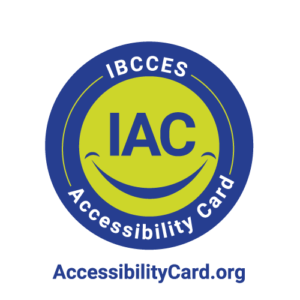By Kim Barloso, AB (article republished with permission)

If you’re an autism parent, it is likely you’ve seen your child present repetitive stimming (self-stimulatory) behaviors such as hand flapping, spinning, and shaking. These behaviors can be worrying if they’re not fully understood.
In this guide, we will discuss everything you need to know about stimming in children with autism spectrum disorder (ASD) and how to manage stimming behaviors.
What is stimming?
Stimming is a shortened way of describing “self-stimulation”. In a nutshell, stimming refers to self-stimulating behaviors, usually involving repetitive movements or sounds.
Although stimming is one of many possible indicators a child might be on the autism spectrum or have ADHD, stimming behavior does not necessarily mean a person is neurodivergent.
A person who stims tends to show repetitive body movements (such as rocking) that can involve all five senses, or they might move objects in a repetitive motion. You might also hear stimming referred to as “stereotypy.”
Why do people with autism stim?
Stimming can take the form of hand flapping, verbal noises or tics, other movements such as rocking, and many more behaviors. There are several reasons stimming can occur in children and adults with autism.
Let’s take a look at some of the main types of stimming and the possible triggers.
Hand flapping
Of all the stimming behaviors, hand flapping is perhaps one that is most noticeable in children with ASD. It is a type of repetitive behavior that can occur for short or long durations.
Hand flapping can present itself as a stimming behavior in many ways, including:
- Moving fingers vigorously
- Clicking fingers
- Moving arms
Most of the time, hand flapping is nothing to worry about and the behavior can be triggered by any of the following:
- Excitement
- Nervousness
- Fidgeting
- Decreased body movements
Hand flapping is only a cause for concern if it results in self-harm or gets in the way of the child’s daily living, through limiting the use of his/her hands.
The video below shows a child hand flapping while excited.
Verbal and auditory stimming
Auditory stimming is any repetitive behavior that has the potential to impact a person’s sense of hearing or effective communication. It may include:
- Repetitive speech (learned words such as song lyrics, movie lines, book passages)
- Covering or tapping of ears, snapping fingers, or tapping on objects repeatedly
- Humming, grunting, or high-pitched noises
Visual stimming
Visual stimming is a behavior that is connected to a person’s sense of sight. It may include:
- Staring blankly at objects
- Hand flapping (as described above)
- Lining up objects such as toys
- Blinking repeatedly
- Turning lights on and off
Tactile stimming
Tactile stimming refers to repetitive behaviors connected to a person’s sense of touch. Examples may include:
- Rubbing or scratching of hands or objects
- Repetitive hand motions such as opening and closing fists
- Tapping fingers repeatedly
- Tactile defensiveness
Vestibular stimming
A vestibular stim is a behavior linked to a person’s sense of balance and movement. It may include:
- Rocking back and forth or side to side
- Twirling or spinning
- Jumping repeatedly
- Hanging upside down
Olfactory or taste stimming
Olfactory stimming centers around a person’s sense of taste and smell. It includes repetitive behaviors such as:
- Smelling objects
- Tasting unusual objects
- Licking hand or objects






 IBCCES Accessibility Card Now Available as a Mobile App
IBCCES Accessibility Card Now Available as a Mobile App